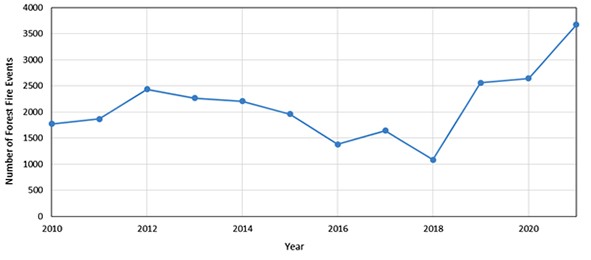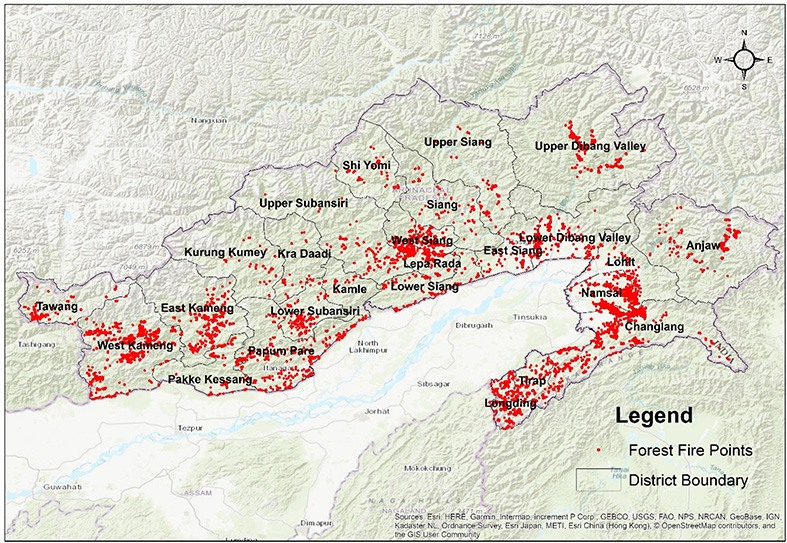[ Kesar Chand & Pritom Saikia ]
The Intergovernmental Panel on Climate Change (IPCC) in its sixth assessment report stated that heat waves and humid stress will be more intense and frequent during the 21st century. Heat as well as cold waves and extreme precipitation will be more frequent in India.
India’s average temperature has risen by around 0.7 degree Celsius during 1901-2018, as per a report by the ministry of earth sciences. Increasing temperature, changing rainfall patterns, shift in plant communities and other climate-related changes have vastly increased the likelihood that forest fires will start more often and burn more intensely and widely than they have in the past. Scientists of the North East Regional Centre of GB Pant National Institute of Himalayan Environment (NERCGBPNIHE), Itanagar, say that forest fires in the Indian Himalayan region have been strongest in the past 15 years. Based on analysis of satellite data, the Indian Himalayan region witnessed approximately 5, 25,695 events of forest fires from 2010 till 2021.
And Arunachal Pradesh alone witnessed 25,486 events of forest fires. These figures show the intensity with which the fires are burning in the region and it’s quite worrying. What worries more is the rising number of forest fires. Arunachal Pradesh is witnessing a sharp rise in the number forest fires from the past few years.

It may be seen that the number of forest fire events in Arunachal Pradesh have increased more than twice in the past three years. The state reported 1,771 events of forest fires in 2010, whereas in 2020 it was 2,644, which is more than double the events of 2010. 2021 is the worst year in terms of forest fires as the state recorded more than 3,000 forest fire points. The local communities from the state say that rainfall and snowfall have changed in the past decade. Winters are not harsher as earlier and are much warmer.
Scientists claim that climate change is the major driver of increasing forest fires. Soaring temperature and an acute deficit in rainfall have attributed to the forest fires in Arunachal Pradesh. Such forest fires, if they remain uncontrolled, can lead to significant loss of forest cover. The impact of these fires is more devastating because Arunachal Pradesh is one of the major biodiversity hotspots. It is the home to many endangered species of flora and fauna. Along with it, forest fires also causes economic damages.

Forest fires are caused by both natural as well manmade activities. Various anthropogenic factors combine to cause uncontrolled fires. Fires of varying intensity and extent can affect thousands of hectares of forest every year, seriously influencing the nutrient cycling and functioning of the ecosystem. It is critical to monitor and understand such fires using satellite data and GIS technology, so that we can successfully manage them in a changing climate. (The contributors are with the NERCGBPNIHE, Itanagar.)

